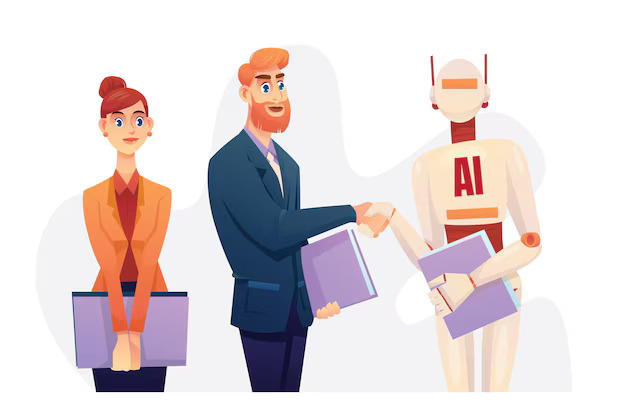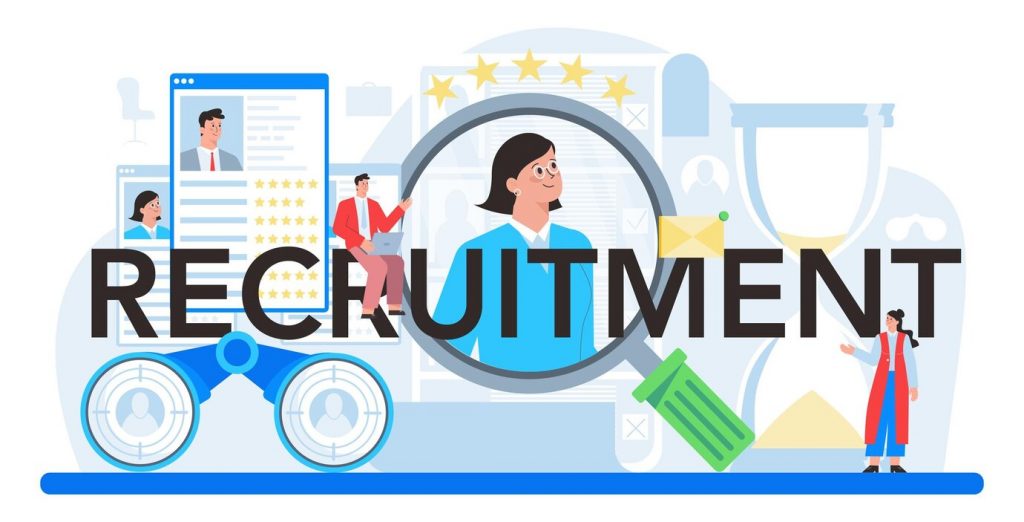Introduction
The glass ceiling in hiring has long been a challenge for organizations striving for workplace equality. Invisible yet persistent, it prevents qualified candidates—often women and underrepresented minorities—from advancing into leadership roles. While traditional hiring methods have struggled to break these barriers, artificial intelligence (AI) is emerging as a transformative force in recruitment.
Organizations increasingly turn to AI hiring solutions to eliminate bias, improve diversity, and ensure fair hiring practices. According to a 2023 report by McKinsey, companies with more diverse leadership teams outperform their industry peers by 36% in profitability. Yet, systemic hiring biases still hinder diverse candidates from securing executive roles.
This article explores how AI in recruitment is helping dismantle the glass ceiling, the key technologies driving this change, and real-world case studies that demonstrate AI’s potential to create a more equitable job market.
Also Read: Top Trends Shaping Interview as a Service in 2025 & Beyond
Understanding the Glass Ceiling in Recruitment
The glass ceiling in hiring refers to the invisible but entrenched barriers that prevent individuals—especially women and minority candidates—from advancing in their careers, regardless of qualifications or experience.
Historical Context and Prevalence
The term “glass ceiling” was first coined in the 1980s to describe gender-based career limitations. Today, it extends beyond gender to include race, age, disability, and other factors that contribute to biased hiring decisions.
- A Harvard Business Review study found that women apply for promotions only when they meet 100% of job qualifications, while men apply at 60%. This self-selection is partially driven by systemic hiring biases.
- Only 10% of Fortune 500 CEOs are women, despite women making up nearly 50% of the workforce (Pew Research, 2024).
- A 2023 LinkedIn study revealed that Black and Hispanic professionals are 40% less likely to receive responses from recruiters compared to White candidates with similar qualifications.
Also Read: How Interview as a Service Saves Time and Costs in Recruitment
Factors Contributing to the Glass Ceiling in Hiring
Several structural and cultural factors reinforce the glass ceiling:
- Unconscious bias: Hiring managers may favor candidates who share similar backgrounds, often without realizing it.
- Network-based hiring: Executive hiring frequently relies on referrals, limiting opportunities for diverse candidates.
- Lack of mentorship: Underrepresented employees often struggle to access mentors and sponsorship opportunities.
- Bias in job descriptions: Research shows that words like “dominant” and “competitive” discourage female applicants, while men are less likely to apply for roles emphasizing “collaboration” or “empathy.”
Impact of the Glass Ceiling on Organizations
A lack of diversity in leadership impacts more than just the individuals affected—it harms business performance and innovation.
- Companies in the top quartile for gender diversity are 21% more likely to experience above-average profitability (McKinsey, 2023).
- Firms with a higher percentage of diverse executives generate 19% more innovation revenue (Boston Consulting Group, 2023).
- Employee turnover is 2.5x higher in organizations with perceived bias in hiring and promotions (Deloitte, 2023).
Also Read: How Interview as a Service Can Improve Candidate Experience
The Role of AI in Breaking Hiring Barriers
Artificial intelligence is transforming hiring by introducing data-driven, objective decision-making processes that minimize human bias. How AI is breaking the glass ceiling in recruitment is through automation, analytics, and machine learning.
How AI Identifies and Mitigates Bias
AI-powered recruitment platforms use algorithmic fairness techniques to detect and correct bias in job descriptions, resume screening, and interview evaluations.
- Blind resume screening: AI anonymizes candidate profiles, ensuring that names, genders, and ethnic backgrounds do not influence hiring decisions.
- Fairness audits: Machine learning models can analyze past hiring data to detect patterns of bias and adjust scoring mechanisms accordingly.
- Equitable interview assessments: AI-driven video interview analysis focuses on skills-based evaluation rather than subjective perceptions.
AI Applications That Enhance Candidate Evaluation
AI improves candidate assessment by focusing on skills, potential, and cultural fit rather than traditional proxies like education or previous job titles.
- Predictive analytics: AI predicts candidate success by analyzing past hiring data, employee performance, and job requirements.
- Natural language processing (NLP): AI refines job descriptions, removing gendered language and biased terminology.
- Behavioral analysis: AI tools assess soft skills and leadership potential through data-driven assessments rather than subjective gut instincts.
Case Studies Demonstrating AI’s Impact on Fair Hiring
- Unilever: The company implemented AI-based video interviews that analyze body language and tone of voice to reduce interviewer bias, increasing gender and ethnic diversity by 16%.
- IBM: By using AI in recruitment, IBM saw a 30% increase in hiring diverse candidates and a 50% reduction in hiring bias complaints.
- JobTwine Interview as a Service: JobTwine’s AI-powered hiring solution integrates unbiased evaluation tools, ensuring that companies hire based on merit rather than subjective bias.
Also Read: Interview as a Service vs. AI Chatbot Recruiting: Key Differences & Benefits
Key AI Features That Promote Fair & Inclusive Hiring
AI-driven recruitment technologies are reshaping how organizations attract, assess, and hire talent in a way that promotes diversity and fairness.
Automated Resume Screening for Bias Reduction
Traditional resume screening often results in unintentional discrimination due to implicit biases in hiring managers. AI ensures objectivity by:
- Removing identifiers like name, gender, and ethnicity before screening candidates.
- Prioritizing skills over pedigree, reducing bias toward prestigious schools or past employers.
- Analyzing historical hiring patterns to detect and correct biased trends.
Predictive Analytics for Assessing Candidate Potential
Rather than relying on past experiences alone, AI evaluates future performance potential through predictive analytics.
- AI-driven psychometric assessments analyze candidates’ problem-solving abilities, leadership traits, and adaptability.
- Data-backed hiring decisions ensure that candidates are chosen based on potential rather than just historical credentials.
Natural Language Processing for Unbiased Job Descriptions
Job descriptions often contain unintentional biases that deter diverse applicants. AI optimizes job postings by:
- Identifying and removing gender-coded language that skews applicant pools.
- Suggesting neutral phrasing to attract a broader talent pool.
- Analyzing response rates to ensure job listings resonate with diverse candidates.
Also Read: What is the Star Method Interview Technique? An Ultimate Guide
Conclusion
AI is revolutionizing hiring by eliminating systemic barriers, improving diversity, and ensuring equitable opportunities for all candidates. By reducing unconscious bias, refining job descriptions, and focusing on data-driven assessments, AI in recruitment is actively dismantling the glass ceiling in hiring.
Organizations that embrace AI hiring solutions not only build more inclusive workplaces but also benefit from stronger innovation, better decision-making, and improved financial performance. The future of recruitment lies in merit-based, AI-driven hiring—a shift that will create truly equitable career opportunities for all.
Frequently Asked Questions:
1. How does AI help reduce bias in hiring?
AI eliminates bias by anonymizing resumes, using data-driven assessments, and conducting fairness audits to detect and correct discriminatory hiring patterns.
2. Can AI completely remove the glass ceiling in hiring?
While AI significantly reduces hiring biases, it must be combined with organizational commitment to diversity, inclusion, and equitable policies to be truly effective.
3. What are the risks of using AI in recruitment?
If not properly monitored, AI models can inherit biases from past hiring data. Organizations must implement regular audits and fairness checks to ensure AI remains an unbiased tool.
4. How can companies integrate AI into their recruitment process?
Companies can use AI-powered platforms like JobTwine to automate resume screening, optimize job descriptions, and conduct unbiased video interviews.
5. What industries benefit most from AI-driven hiring solutions?
Tech, finance, healthcare, and legal industries benefit significantly from AI hiring solutions, as these sectors have historically struggled with diversity and fair hiring practices.




